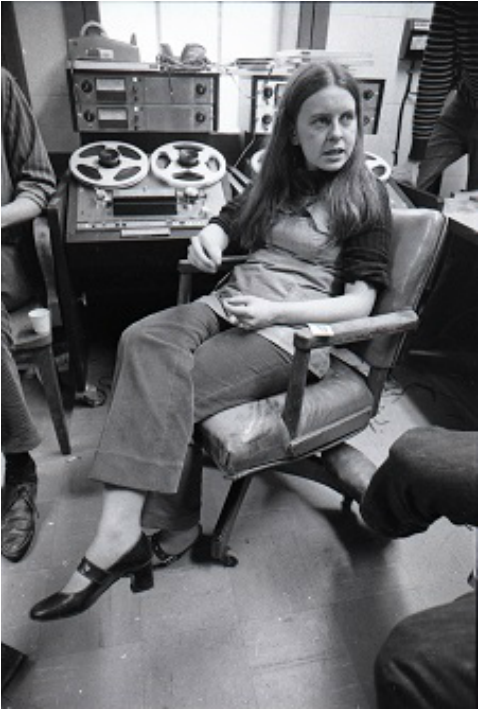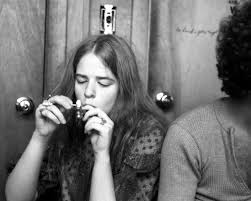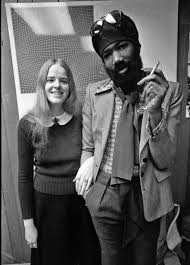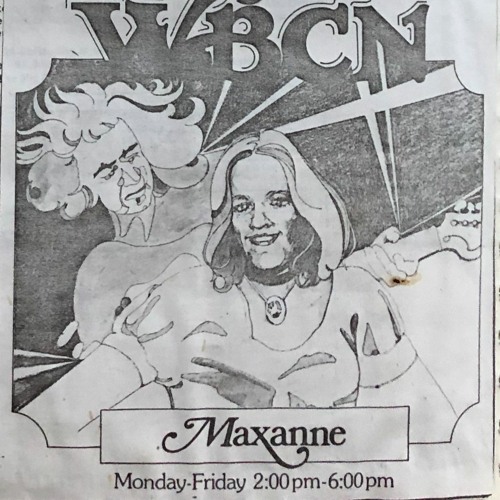-
 play_arrow
play_arrow
AircheckRadio Aircheck Radio
-
 play_arrow
play_arrow
Quid pro bros Vox
-
 play_arrow
play_arrow
Miami-Fort Lauderdale Barry Wright
In the buzzing world of Boston radio during the 1970s, one DJ stood out not just for her killer playlists but for her sheer guts and ear for the next big thing.  Maxanne Sartori, with her infectious love for rock ‘n’ roll, turned afternoons on WBCN into must-listen hours, helping launch careers and proving women belonged behind the console. Her story is one of passion meeting opportunity, and it’s still inspiring folks in the booth today.
Maxanne Sartori, with her infectious love for rock ‘n’ roll, turned afternoons on WBCN into must-listen hours, helping launch careers and proving women belonged behind the console. Her story is one of passion meeting opportunity, and it’s still inspiring folks in the booth today.
Sartori’s radio journey kicked off in Seattle back in 1969, where she spun progressive tracks at KOL-FM (sometimes noted as KLOL or KLFM in old records). At just 20 years old, she caught the attention of WBCN’s program director Sam Kopper, who was on the hunt for fresh talent. He brought her east to Boston, and on a superstitious Friday the 13th in November 1970, she slid into the afternoon slot from 2 to 6 p.m. It was a bold move—WBCN was already shaking up the airwaves as a freeform rock station, but adding a young woman focused squarely on hard-hitting rock was groundbreaking.
Those early days at ‘BCN were electric. Sartori had the freedom to curate her own sets, mixing established acts with raw demos from local bands scraping by in Boston’s clubs.  She didn’t just play music; she championed it. Take Aerosmith—they were unknowns when she got hold of their demo tape. Despite pushback from station higher-ups, she hammered tracks like “Dream On” and “Sweet Emotion” until listeners couldn’t get enough. The band’s debut album flew off shelves in New England, selling 40,000 copies locally, and “Get Your Wings” went gold. Sartori’s persistence paid off big time, turning a scrappy Boston outfit into rock legends.
She didn’t just play music; she championed it. Take Aerosmith—they were unknowns when she got hold of their demo tape. Despite pushback from station higher-ups, she hammered tracks like “Dream On” and “Sweet Emotion” until listeners couldn’t get enough. The band’s debut album flew off shelves in New England, selling 40,000 copies locally, and “Get Your Wings” went gold. Sartori’s persistence paid off big time, turning a scrappy Boston outfit into rock legends.
She did the same for others. The J. Geils Band got early spins that helped them build a rabid following. Then there was Cap’n Swing, a quirky group that morphed into The Cars. Sartori latched onto their demos, blasting “Just What I Needed” and “My Best Friend’s Girl” during her show. Calls flooded in, and soon A&R reps were knocking. As she later recalled, “Calls poured in with positive comments. Shortly thereafter, it became one of the station’s most requested songs.” Billy Squier, Nervous Eaters, and Reddy Teddy all owe her a nod for airtime that put them on the map.
And let’s not forget Bruce Springsteen. Sartori was an early believer, hosting intimate unplugged sets in the WBCN studios in 1973 and 1974. One standout was his acoustic “Rosalita,” performed right after he thanked her on air. These moments weren’t just broadcasts—they were lifelines for artists in a tough industry, and Sartori’s support helped Springsteen break through in the Northeast.
 What made Sartori a true pioneer? At a time when women in radio were often sidelined to softer formats or overnight shifts, she dove headfirst into rock, holding her own alongside guys like Charles Laquidara and Danny Schechter. Her hiring even came amid some station drama—criticism from activists about on-air comments led Kopper to bring in more diverse voices, and Sartori fit the bill perfectly. She wasn’t there as a token; she earned her spot by knowing the music inside out and connecting with listeners who craved authenticity. For women eyeing radio gigs today, her path shows that talent and tenacity can crack open doors that seemed bolted shut.
What made Sartori a true pioneer? At a time when women in radio were often sidelined to softer formats or overnight shifts, she dove headfirst into rock, holding her own alongside guys like Charles Laquidara and Danny Schechter. Her hiring even came amid some station drama—criticism from activists about on-air comments led Kopper to bring in more diverse voices, and Sartori fit the bill perfectly. She wasn’t there as a token; she earned her spot by knowing the music inside out and connecting with listeners who craved authenticity. For women eyeing radio gigs today, her path shows that talent and tenacity can crack open doors that seemed bolted shut.
Sartori stuck with WBCN until April 1, 1977—fittingly, April Fool’s Day—before exploring new horizons. She jumped to WRVR in New York for jazz vibes, then back to Boston in 1983 to program WBOS. By 1984, she was at WNEW as music director and on-air talent until 1987. Later stints took her to stations in Seattle and Monterey, circling back to her roots. Eventually, she shifted gears into record promotion, working regionally for Island Records, then nationally at Elektra-Asylum, and finally as an independent. Even today, she’s remembered fondly in industry circles, with her 2018 induction into the Massachusetts Broadcasters Hall of Fame celebrating a legacy that’s still alive and kicking.
On the personal side, Sartori has kept things low-key over the years—no splashy headlines about family or off-air adventures. What shines through is her unwavering dedication to the music and the people who make it. From Seattle kid to Boston icon, she moved where the beats took her, eventually settling in New York while staying tied to the record world. Recent shoutouts from fans and pros alike—tributes to her Aerosmith plays or Cars discoveries—prove her impact endures.
Maxanne Sartori didn’t just spin records; she sparked careers and showed that radio could be a force for discovery and inclusion. For broadcasting pros grinding away and enthusiasts tuning in late at night, her story is a reminder: Find what moves you, crank it up, and watch the magic happen. Here’s to Maxanne—still rocking our memories.
Written by: Barry Wright
Boston Radio Maxanne Sartori WBCN
Similar posts
Most Liked Airchecks
Events
Support Aircheck Radio
Copyright 2025 Aircheck Radio is a proud listener supported 501(c)(3) nonprofit organization





Post comments (0)